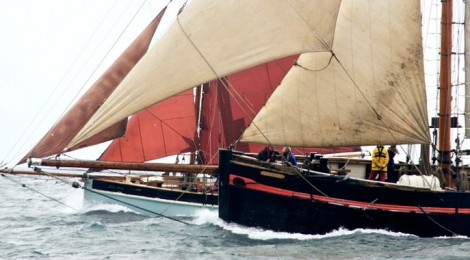
Fishing Fleet Working 17 Times Harder Than in 1880s to Make Same Catch
Fishing Fleet Working 17 Times Harder Than in 1880s to Make Same Catch
The UK trawl fishing fleet has to work 17 times harder to catch the same amount of fish today as it did when most of its boats were powered by sail, according to new research.
Researchers from the University of York and the Marine Conservation Society (MCS) used UK Government data on the amount of fish caught and the size and number of boats involved — the fleet’s fishing power — to analyse the change in fish stocks since 1889.
They found that trawl fish landings peaked in 1937, 14 times higher than today, and the availability of bottom-living fish to the fleet fell by 94 per cent.
The findings are the result of a study using previously overlooked records and suggest the decline in stocks of popular fish such as cod, haddock and plaice is far more profound than previously thought.
The research is published in Nature Communications, the new online science journal from the publishers ofNature.
Ruth Thurstan, lead author of the study from the University of York’s Environment Department, said: “We were astonished to discover that we landed over four times more fish into England and Wales in 1889 than we do today.
“For all its technological sophistication and raw power, today’s trawl fishing fleet has far less success than its sail-powered equivalent of the late 19th century because of the sharp declines in fish abundance.”
The findings suggest that the damage to fisheries is greater and has taken place over a much longer period than previously acknowledged, pre-dating developments such as the Common Fisheries Policy which are usually blamed for declining stocks.
Simon Brockington, Head of Conservation at the Marine Conservation Society and an author of the study, said: “Over a century of intensive trawl fishing has severely depleted UK seas of bottom living fish like halibut, turbot, haddock and plaice.
“It is vital that governments recognise the changes that have taken place. The reform of the Common Fisheries Policy gives an opportunity to set stock protection and recovery targets that are reflective of the historical productivity of the sea.”
The study calculated ‘landings of fish per unit of fishing power’ (LPUP) from 1889 to 2007 to give an indication of changes in the amount of fish available for capture by the fishing fleet. In that time, LPUP declined 500 times for halibut, more than 100 times for haddock and more than 20 times for plaice, wolffish, hake and ling. Cod has declined by 87 per cent.
Professor Callum Roberts, from the University of York’s Environment Department, said: “This research makes clear that the state of UK bottom fisheries — and by implication European fisheries, since the fishing grounds are shared — is far worse than even the most pessimistic of assessments currently in circulation.
“European fish stock assessments, and the management targets based on them, go back only 20 to 40 years. These results should supply an important corrective to the short-termism inherent in fisheries management today.









Comments are closed, but trackbacks and pingbacks are open.